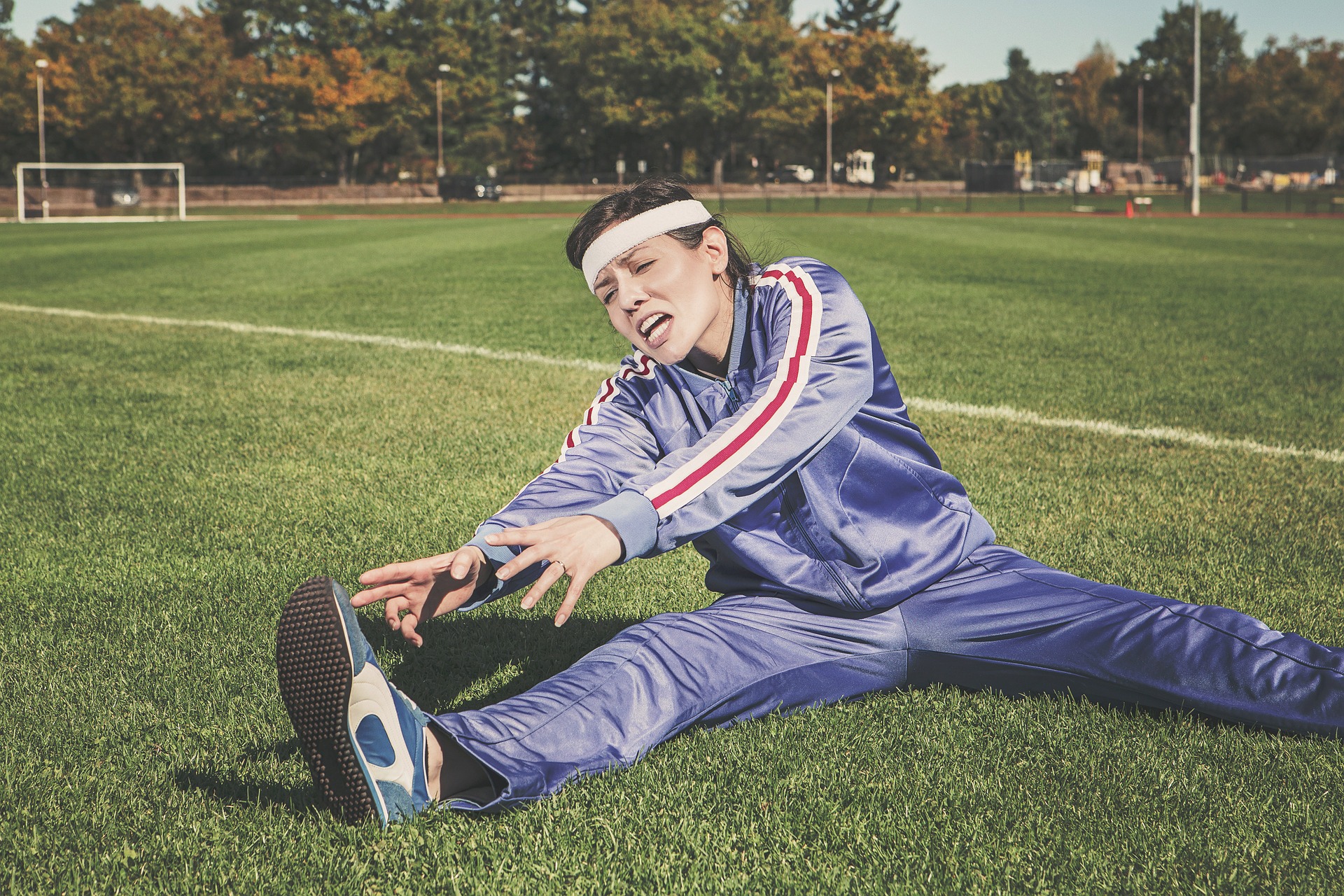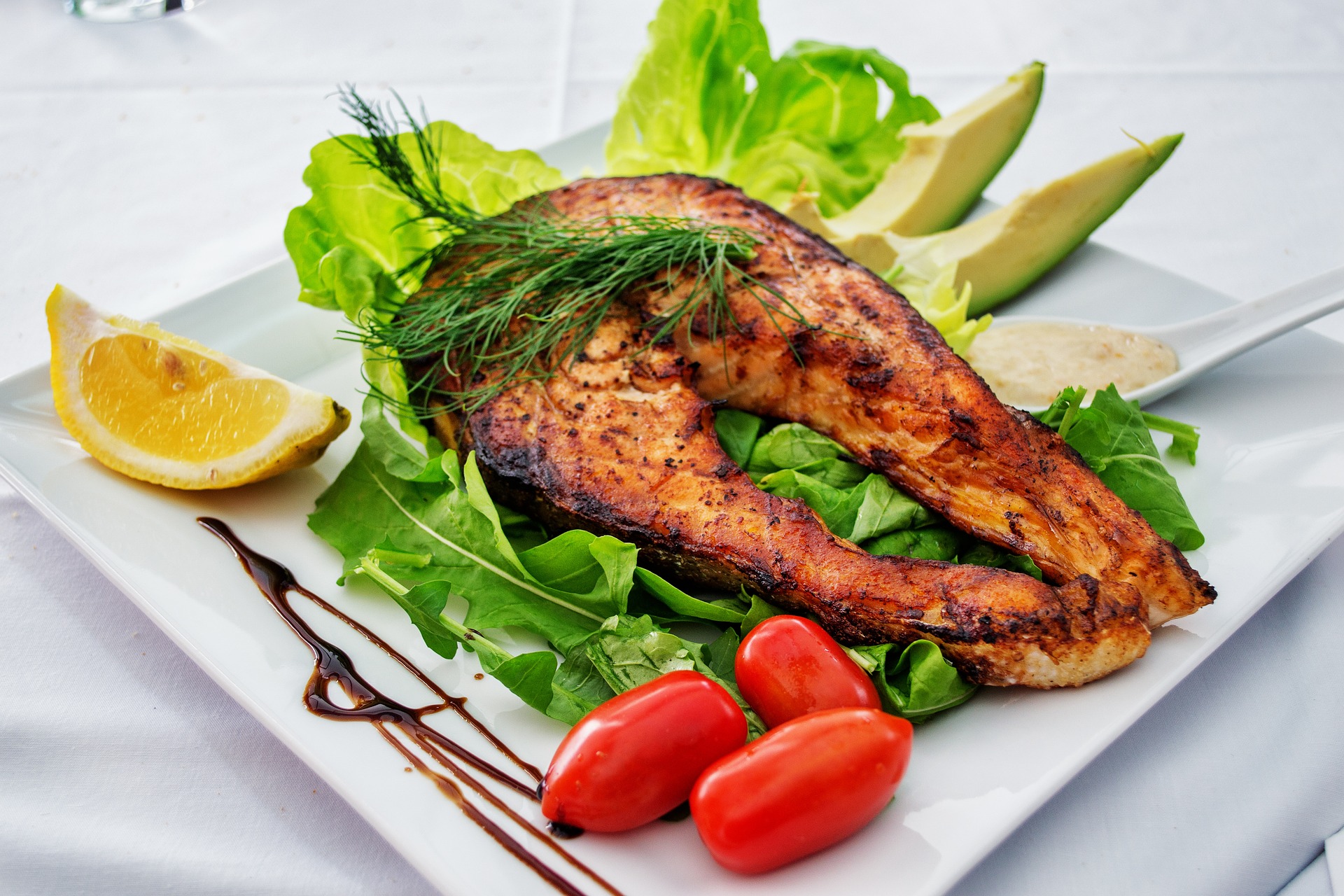
Many people will jump in a kayak without giving fitness a second thought. It’s not until they’re breathless, and their arms are burning do they stop and realise:
“Hey, this kayaking malarkey is actually hard work.”
Paddling, whether kayaking, canoeing, or stand-up paddleboarding, should be treated as a form of athletics, in which you need to prepare, and maintain your body for adequately.
This includes warming up, stretching, and mobility exercises at the beginning and end of each session, as well as keeping yourself in shape out of the water.
Recreational paddlers who enjoy an afternoon of family fun on the water a couple of times a year can choose to ignore the following advice. But if you’re even the least bit serious about paddling, then listen up.
Our guide gives you the complete fitness routine for kayakers. We look at exercise, diet, stretching, and everything else you need to do to prepare the body for the demands of paddling.
Why Bother with Being a Fit Paddler?
Kayaking already has a few limitations: weather conditions, what your buddies are up to, and the time involved in travelling to a good spot.
Don’t let your fitness be another item on the list! When the clouds part, you want your body to be just as willing as your mind.
Kayaking and outdoor sports in general are invigorating.
But if your body is not up to the challenge, you will be left exhausted quickly, and what started off as fun, soon becomes a chore.
Being cold, wet, and completely drained of energy sucks, but it can also be damn dangerous on the water.
Stay Healthy For Safety
Fitness plays a vital role in kayaking, influencing your personal enjoyment, the likelihood of injury, and also the safety of you and everyone in your group.
It’s crucial that you’re fit enough to be safe.
This not only means being able to keep paddling for your whole outing, but also being ready to deal with any trouble that arises.
Accidents can and do happen, and when they do, you and the people in your group have to depend on you.
Being unfit means you’re a liability to your group, and puts not only yourself at risk of harm, but the entire group.
If you happen to capsize in moving water, being able to swim to your kayak or a safe spot means no one else has to risk themselves to save you. Being fit enough for self-rescue has defused what could have been a potentially fatal situation.
By being fit, you can also help other paddlers that have been chucked out their kayak or find themselves in trouble.
Most injuries and accidents can be prevented by staying fit and healthy, proper paddling technique, and a little common sense.
How Fit Do You Need To Be For Kayaking?
Kayaking has many different intensities. One paddler may be ferociously battling a tidal movement, while another cruises gently downstream, using the paddle sparingly to correct course.
These workouts are at opposite ends of the spectrum. One has the potential to completely deplete the energy bank, while the other is no more taxing than a gentle walk.
Depending on the type of kayaking you’re doing and the skill level required, will determine the degree of fitness required.
However, as a benchmark, and for safety reasons, you should be able to
- Swim at least 100m
- Swim 50m while towing your kayak
- Paddle at a moderate intensity for 60 minutes without stopping
The 4 Elements of a Fit Paddler
Fitness for paddling is achieved by working on four elements: strength, cardio, endurance, and flexibility.
1) Strength
It’s not enough to just be powerful. Being a hulking mass of muscle won’t do you much good when kayaking. The key is to build functional muscle that’s able to endure repetition.
Beginners also make the mistake of concentrating on arm exercises when trying to build strength for paddling, but as you’ll see below, getting a good bite from the water is all to do with your core and legs, and not your arms.
2) Cardiovascular Fitness
A healthy cardiovascular system can engage in strenuous aerobic activity and recover from it quickly.
If you get puffed easily from kayaking along calm water, it may be time to engage in more cardio training.
3) Endurance
Most kayaking sessions will require you to be out on the water for at least 30 minutes. As your endurance increases, you may stretch your outings to several hours or even multiple days.
If you’re to paddle for several hours without a break, you’ve got to build stamina.
4) Flexibility
Working on your flexibility will lead to fewer muscles strains, a full range of motion during your strokes, and being more comfortable in the boat.
Increase flexibility by incorporating it into your training program and performing a head-to-toe stretching routine before you step into the kayak.
Muscles Used When Kayaking
If you’re not particularly athletic, engaging your ‘paddling muscles’ for the first time can be draining.
Kayaking is an excellent upper-body workout. It utilises your biceps, triceps, shoulders, back, and even your abdominal muscles.
However, proper paddling technique actually uses the back and stomach muscles much more than your arms and even employs the legs.
With experience, you’ll learn to use hip and shoulder rotation to engage your core with each stroke.
You also hold a degree of tension (which builds muscle) in your quads, hams, calves, and glutes, as you brace off the footrests and utilise your legs for balance and adding power to your strokes.
So, despite people thinking that kayaking is all in the arms, it’s really not. Your legs, hips, and back are where the power comes from.
There’s also the bonus of your cardiovascular system getting a workout as your heart rate and breathing increase with increased exertion.
The Benefits of Stretching

When I’m heading out for a big day on the water, I’ll kick things off with a freshly brewed french press coffee, while running through a whole-body stretching routine.
Even though I’ll be using my upper body muscles more on the water, I’ll make sure to stretch everything off from head to toe: neck, shoulders, arms, wrists, back, stomach, and legs.
Many kayakers don’t bother with stretching... and they’re missing out on so many benefits.
Stretching your muscles before, during, and after working out can
- Decrease muscle warm up time
- Reduce the risk of injury
- Improve your flexibility (flexibility=strength)
- Improve recovery times after hard workout sessions
Tips on Stretching
Many of you will be well versed in proper stretching technique. If you aren’t, here are a few pointers to keep in mind.
- Listen to your body and only push as far as it’s comfortable. Your muscles should be under slight strain, but if it’s hurting, ease up a bit.
- Don’t worry if you can’t touch your toes or you’re not as flexible as your mates. If you practice stretching consistently, you’ll improve your flexibility gradually.
- Hold each posture for 10-15 seconds. Your breathing should be slow and controlled. Stretch further as you exhale.
- Perform a stretching and warm-up routine that works from the top down to ensure you don’t miss any major muscle groups.
- Perform your stretching routine before and after your paddling session.
Using a Foam Roller
While I do my morning stretch and I’m in no rush, I’ll also use a foam roller to address any little niggles I have. These tube-shaped devices massage your muscles and break down adhesions that can limit mobility and be painful.
Like stretching, foam rolling can help to warm up your muscles, improve mobility, and improve recovery times – so they go hand in hand!
I highly recommend them if you’re plagued with an injury which keeps rearing its ugly head when you’re on the water. Here’s a foam roller guide if it sounds like it would be helpful.
When I get to the water, I’ll also run through a kayaking specific stretching routine using my paddle. I wouldn't usually spend too much time on this unless I missed my morning stretch.
Here’s a great video that goes over the kind of paddling specific stretching I’m talking about:
And with that, you should be all loose and ready to warm up.
Warming Up
Just like you do when playing sports or lifting weights, you should be warming the body up before paddling. Simple exercises, such as jogging on the spot or jumping jacks, will get the blood flowing.
Once in the water, you should do some warm-up strokes.
Punch the paddle out as far forward as you can, and then perform a forward stroke. These should be full-motion strokes where you really pay attention to technique and engaging the core and leg muscles.
Do this for 30 strokes to loosen off and warm the body, and then repeat for the reverse stroke.
You’re now set to enjoy a hard-out paddling session without fear of tweaking anything.
Stretching While Kayaking
Sometimes it’s important to stretch while you’re paddling, especially if you’re on a long trip.
Relieve discomfort and tightness by running through this quick routine:
1) Shake your legs and wiggle you toes occasionally to keep the blood circulating.
2) Stretch out your torso by reaching up and bending forward and backwards from the hips.
3) Shake off your arms and stretch your neck.
4) Hold your paddle straight out in front of you with both hands and then rotate to the left and right to stretch out your lats.
Cool Down
Just as warming up is part of your pre-paddling routine, cooling down should be made routine after you get out of your boat.
Even if you’re exhausted, take the time to go through a quick full-body stretch as it will reduce soreness and recovery times.
Pay particular attention to your paddling muscles and any areas of your body that gave you trouble on the water.
While I’ve given some recommendations for stretching, warming up, and cooling down – there’s no one-size-fits-all or a specific routine that you need to adhere to. In a nutshell, it’s about getting your muscles stretched out and body warm before any exercise.
Out of Water Training
There is usually no training better than sport specific training, and kayaking is no exception.
For example, a tennis player could increase the speed and power of his serve by building the muscles in his arms. However, it’s the time on spent on the court, drilling serve after serve that’s really going to pay off. And it’s the same deal with kayaking.
If you want to be a faster, fitter, stronger paddler, you need to spend more time in your kayak. Simple.
However, I know that not everyone lives close to a waterway, and there could be weeks between paddling sessions. Kayaking is also a seasonal sport for many people who have extreme shifts in climate between seasons.
So, if you don’t want to feel like a burst ball every time you’re in your kayak, you need to engage in fitness training between kayaking sessions.
But what kind of training should this be?
Well, as we’ve discussed, kayaking requires a mixture of strength, endurance, and cardiovascular fitness, and it makes sense to work on all of these elements during off-season training.
Focusing too much on one particular area will leave you ill-prepared next time you step into your boat.
If you adopt a bodybuilding routine, you’ll build big, cumbersome muscle that will only get in the way of your strokes and require more oxygen, and hence energy, to fuel.
Similarly, if you adopt marathon running during the off-season, you’ll have an underutilised, and weak upper body come summer. Extreme examples, but you get the point.
Developing a Kayaking Fitness Routine
There is no single best alternative exercise or workout for paddlers.
I lift weights a couple of days a week and will run maybe three times. This works for me, but some people would find this excruciatingly boring.
As I said, there is no perfect paddling replacement, so I would suggest a sport or exercise routine that includes the following three elements.
1. Pick Something Enjoyable
Weight loss, bustling muscles, and looking and feeling your best are all desirable goals, but unless you actually do the training, you’re not going to reap the rewards.
No matter how beneficial your workout is, you’re not likely to stick to it if you don’t find it pleasurable.
Yes, yes, I know it’s hard to beat the fun of kayaking. But perhaps you could try another sport you’ve always wanted to have a go at, workout with a friend, or listen to music while you exercise.
Yes, yes, I know it’s hard to beat the fun of kayaking. But perhaps you could try another sport you’ve always wanted to have a go at, workout with a friend, or listen to music while you exercise.
2. Mix It Up With Both Strength and Cardiovascular Training
An effective training program will include both strength and cardio exercises. Overdoing one type of training will leave you ill-equipped when you get back on the river.
Remember, being an efficient kayaker requires a balance of strength, fitness, endurance, and flexibility.
So, for the strength training element, a three-day weights routine that works the entire body is more than adequate.
Working on your arms will help with fine motor control of the boat, exercising your core (particularly your back) will put power into your strokes, and exercising your legs will help with generating force and stabilizing the boat.
If you want to take it a step further, you can do strength exercises which resemble paddling movements.
For the cardio element, a 30-60 minute running, rowing, or cycling session three to four times a week will do just fine. Or if you play sports, you can substitute these activities for something more fun.
Any form of aerobic exercise that raises your heart rate to 65-80% of its maximum is suitable.
3. Train Regularly
No matter what you decide on, you have to train regularly to improve and maintain your health and fitness. That’s why it’s important to pick something you enjoy doing.
Now, this doesn’t mean you need to spend every day at the gym. The level of fitness you require and the intensity and intricacy of your training will depend on how active a paddler you want to be.
Training to exhaustion every day or using muscles that have not yet fully recovered will cause more damage than good.
Nutrition

Being fit for paddling, should be part of an overall healthy lifestyle, where you’re eating nutritious meals and getting enough quality sleep.
Personally, I practice a clean eating diet packed with fruits and vegetables, whole grains, and lean meats. I did try paleo, but I am an extremely active person and found that I needed some carbs to fuel workouts and keep weight on. The curse of the ectomorph!
As for paddling specific nutrition, here’s my recommendation.
If you know it’s going to be a big day on the water, fuel up by eating a filling, nutritious breakfast. My go-to breakfast is a big bowl of oats, topped with banana, cranberries, and sliced almonds. YUM!
But if you’re not a fan of oats, other similar slow-burning carbs will do the trick.
You’re going to be burning through 300-450 calories per hour of paddling, and possibly even more if you’re going against the current or fighting the wind. Pit stop intervals may be several hours apart, so make sure you’re not entering your kayak with your stomach already grumbling.
When you’re on the water, food choice is going to be limited to water-resistant foods that you can eat quickly and easily. I would recommend bananas (although they can be bad luck), small packets of nuts, and cereal bars.
I’ll usually have a wholemeal sandwich with chicken, tomatoes, and salad waiting for me on the shore, which is where it will stay as I don’t want to risk it getting wet and turning to mush.
Conclusion
Kayaking offers a unique combination of physical and wellness benefits that not many sports can. You’re likely to be in a magnificent outdoor setting while getting your exercise and vitamin D quota.
But to be able to lose yourself in the wilderness and not be concentrating on how tired you feel, you need to possess a decent level of physical fitness.
Living a fit and healthy lifestyle will help you get maximum enjoyment out of kayaking.
And if you put into practice the nutrition, stretching, and off-season training practices we’ve covered in this article, you’ll be able to paddle harder and longer without getting injured or overly sore.
So, stay conscious of your body, listen to it, and keep enjoying kayaking.
Happy (injury-free) paddling!
As an Amazon Associate, we earn from qualifying purchases. This is without any additional costs for the buyer but does support us in maintaining our website.




Thank you for sharing this information. I’m interested in kayaking, but I don’t know where I can learn it from.